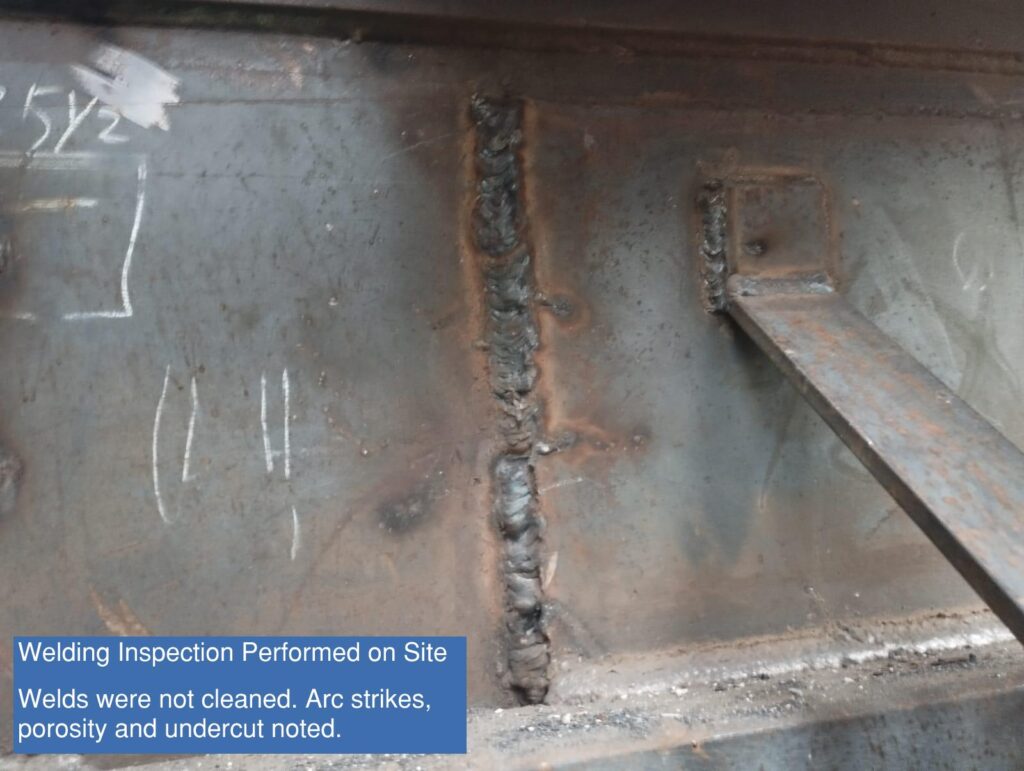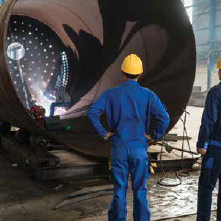How Welding Inspection Racine Ensures Security and Compliance
How Welding Inspection Racine Ensures Security and Compliance
Blog Article
Innovative Techniques to Fillet Weld Assessment and Screening: Enhancing Weld Top Quality and Conformity Requirements
In the realm of welding, the quality and integrity of fillet welds play a vital function in making sure the architectural strength and dependability of numerous commercial elements. With the consistent drive for boosted performance and conformity with rigid requirements, the expedition of cutting-edge strategies to fillet weld inspection and testing has become vital. As markets progress, the standard techniques might no longer be sufficient in satisfying the needs of modern-day welding applications. By accepting sophisticated modern technologies and techniques, a brand-new perspective of opportunities emerges in the realm of weld high quality evaluation and adherence to conformity requirements.
Advanced Non-Destructive Testing Techniques
Using cutting edge technologies, advanced non-destructive screening methods play a crucial duty in guaranteeing the honesty and high quality of fillet welds. These approaches, such as phased range ultrasonic screening (PAUT) and magnetic bit screening (MPT), deal comprehensive understandings into the weld's interior framework without causing any type of damages to the material. PAUT, for circumstances, utilizes several ultrasonic components to evaluate the weld from different angles, providing a comprehensive visualization of prospective flaws like absence of combination or splits.
By employing these innovative non-destructive screening strategies, weld assessors can precisely examine the high quality of fillet welds, guaranteeing compliance with industry criteria and regulations. The capacity to identify imperfections early on not just improves weld quality but additionally stops expensive rework or failures in architectural stability, highlighting the importance of these innovative screening techniques in welding assessments.
Robotics and Automation in Evaluation
The integration of robotics and automation has revolutionized the examination procedure for fillet welds, enhancing performance and precision in quality analysis. Robotics use precise control and repeatability in evaluating welds, making sure consistent and reliable outcomes. Automated systems can be configured to follow certain evaluation courses, guaranteeing thorough protection of welds and reducing the threat of human error.
Robot inspection systems furnished with advanced sensors can identify and determine weld attributes with high precision, supplying detailed information for evaluation. These systems can identify flaws such as cracks, lack of blend, and porosity, enabling timely corrective actions to be taken. In addition, robotics and automation permit real-time data collection and evaluation, providing instant responses to drivers and helping with fast decision-making procedures.
Furthermore, the use of robotics and automation in fillet weld examination improves general performance by reducing assessment times and raising inspection throughput. By enhancing the examination process, producers can make certain weld top quality and compliance standards are met effectively, eventually causing set you back financial savings and boosted item top quality.
Utilizing Expert System for Analysis
Synthetic intelligence plays a crucial function in enhancing the performance and accuracy of analysis in fillet weld examination processes. AI formulas can quickly process substantial amounts of information from weld assessments, discovering defects or incongruities that might be challenging to determine with the naked eye - Welding Inspection Racine.
Moreover, AI systems can gain from previous evaluation information, constantly enhancing their ability to determine potential problems and inconsistencies in fillet welds. This adaptive understanding capability improves the total quality assurance procedure, reducing the possibility of human error find this and guaranteeing that welds fulfill the needed requirements. By integrating expert system into fillet weld evaluation, sectors can achieve higher levels of performance, uniformity, and compliance in their evaluation techniques.
Portable Tools for On-Site Assessment
 Enhancing area inspection effectiveness, the fostering of portable devices revolutionizes on-site analysis procedures for fillet welds. These tools supply versatility and ease, enabling assessors to perform complete evaluations in numerous locations, including tough or remote atmospheres. Mobile tools such as ultrasonic testing gadgets, magnetic fragment inspection devices, and digital radiography systems offer real-time information and high-resolution imaging capacities, making it possible for fast decision-making and immediate feedback on weld top quality.
Enhancing area inspection effectiveness, the fostering of portable devices revolutionizes on-site analysis procedures for fillet welds. These tools supply versatility and ease, enabling assessors to perform complete evaluations in numerous locations, including tough or remote atmospheres. Mobile tools such as ultrasonic testing gadgets, magnetic fragment inspection devices, and digital radiography systems offer real-time information and high-resolution imaging capacities, making it possible for fast decision-making and immediate feedback on weld top quality.One substantial benefit of mobile devices is their capacity to simplify inspection procedures, minimizing downtime and improving total performance. Assessors can easily transfer these tools to different task websites, removing the demand for moving heavy equipment or components to off-site centers. In addition, the portability of these tools advertises cost-effectiveness by lessening transportation expenses and increasing find more info examination timelines.
Additionally, using portable tools for on-site examination promotes proactive quality assurance measures, as assessors can promptly identify and resolve any potential welding issues or inconsistencies. By integrating these innovative technologies into on-site examination techniques, welding experts can make certain compliance with market requirements and boost weld quality, eventually causing boosted structural honesty and safety and security in different welding applications.
Integration of Information Management Systems
Having enhanced on-site inspection processes via the usage of mobile devices, the next stage involves the seamless combination of information administration systems to better enhance effectiveness and information analysis abilities in fillet weld examination and testing. Welding Inspection Racine. By integrating information management systems into the assessment procedure, organizations can improve information collection, storage space, and evaluation. This integration permits real-time surveillance of weld top quality, immediate identification of flaws, and punctual decision-making to correct any kind of concerns that might occur throughout the assessment procedure
The integration of data monitoring systems makes it possible for seamless communication in between various stakeholders entailed in the evaluation process, cultivating partnership and enhancing total quality control measures. Inevitably, the combination of information administration systems offers to raise the standards of fillet weld examination and testing, ensuring conformity with market policies and enhancing weld high quality.
Conclusion
In final thought, innovative get more techniques to fillet weld inspection and screening have actually considerably boosted weld quality and conformity standards. Advanced non-destructive testing approaches, robotics, automation, synthetic knowledge, mobile devices, and data monitoring systems have reinvented the means weld evaluations are performed. By making use of these technologies, markets can make sure that welds fulfill the required high quality requirements and laws, eventually enhancing total effectiveness and safety and security in welding processes.

By utilizing these sophisticated non-destructive testing strategies, weld assessors can precisely examine the high quality of fillet welds, making certain compliance with sector requirements and guidelines. Mobile devices such as ultrasonic screening gadgets, magnetic bit assessment devices, and digital radiography systems offer real-time data and high-resolution imaging capabilities, allowing quick decision-making and immediate feedback on weld quality.
Having actually maximized on-site examination procedures via the use of portable tools, the next stage entails the seamless integration of data monitoring systems to additionally improve effectiveness and data evaluation abilities in fillet weld evaluation and testing (Welding Inspection Racine). Inevitably, the assimilation of data management systems offers to boost the requirements of fillet weld evaluation and testing, making certain conformity with industry regulations and boosting weld high quality
 In final thought, innovative approaches to fillet weld examination and screening have significantly boosted weld high quality and compliance criteria.
In final thought, innovative approaches to fillet weld examination and screening have significantly boosted weld high quality and compliance criteria.Report this page